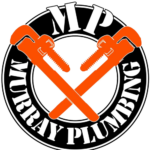Homeowners often overlook plant growth near plumbing systems. Roots can cause serious damage. Plants seek water. Pipes carry water. Roots invade pipes, causing blockages and breaks. This article explains how plant growth threatens plumbing and how homeowners can prevent damage.
How Plant Roots Affect Plumbing
Roots follow moisture. Small cracks in pipes release water. Roots detect moisture. They grow toward the pipe. Once roots reach the pipe, they enter through tiny openings. Roots expand inside the pipe. They block water flow. This leads to slow drains, backups, and burst pipes.
Common Signs of Root Intrusion
Homeowners should watch for warning signs. Slow drainage is one sign. Gurgling sounds in drains also indicate trouble. Frequent clogs suggest root intrusion. Toilets that flush slowly may point to roots in sewer lines. Unpleasant odors from drains can signal blocked pipes.
Plants That Cause Plumbing Problems
Certain plants have aggressive root systems. Willow trees are a common cause. Poplar and oak trees also have strong roots. Bamboo spreads quickly underground. Large shrubs and hedges can damage pipes. Avoid planting these species near plumbing systems.
How Roots Enter Plumbing Pipes
Roots enter pipes through small cracks or loose joints. Old clay pipes are more vulnerable. Concrete pipes can crack over time. Even PVC pipes with loose fittings can attract roots. Roots grow inside pipes, expanding and causing severe damage.
Damage Caused by Plant Roots
Root intrusion can break pipes. Cracks widen. Water leaks into the soil. Soil shifts, causing ground instability. Large leaks lead to sinkholes. Blocked pipes force sewage back into homes. Repairs can be expensive.
Prevention Tips for Homeowners
Plant trees far from sewer lines. Contact utility companies to locate underground lines. Choose plants with small root systems. Regularly inspect plumbing. Schedule routine maintenance. Use root barriers when planting near pipes. Keep drains clean and clear.
Safe Plants to Grow Near Plumbing
Homeowners can choose safe plants. Small flowering plants have shallow roots. Grasses and ground covers are safe options. Dwarf shrubs pose less risk. Avoid large trees or deep-rooted plants.
Professional Inspection and Maintenance
Professional plumbers can inspect pipes. Video inspections show root intrusion. Hydro jetting clears blockages. Professional maintenance extends pipe life. Early detection prevents costly repairs.
How to Remove Roots From Pipes
Professional plumbers use mechanical augers. These machines cut roots inside pipes. Hydro jetting blasts roots and debris. Chemical treatments kill roots without harming pipes. Repairs may involve replacing damaged sections.
Replacing Damaged Pipes
Severe root damage requires pipe replacement. Modern materials like PVC and HDPE resist root intrusion. Pipe relining is another option. It involves inserting a liner into existing pipes. This process seals cracks and prevents future root entry.
Landscaping Tips to Protect Plumbing
Plan landscaping carefully. Plant trees at least 10 feet from sewer lines. Use root barriers when planting shrubs. Maintain garden beds with shallow-rooted plants. Mulch helps retain moisture and reduces root spread.
Why Homeowners Should Act Quickly
Ignoring root intrusion causes bigger problems. Blocked pipes lead to sewage backups. Water damage can harm foundations. Repairs become more expensive over time. Early action saves money and protects property.
Cost of Repairs
Root removal costs vary. Mechanical root removal ranges from $200 to $500. Hydro jetting costs $350 to $600. Pipe replacement is more expensive. Trenchless pipe replacement costs between $3,000 and $6,000. Traditional excavation can exceed $10,000.
Insurance and Plumbing Damage
Homeowners insurance may not cover root damage. Some policies cover sudden pipe breaks. Slow damage from roots often falls outside coverage. Check policy details. Consider adding sewer line protection.
Conclusion
Plant growth can threaten plumbing systems. Roots seek water and invade pipes. Homeowners should watch for signs of trouble. Choose safe plants and avoid aggressive root systems. Regular maintenance prevents damage. Professional help ensures safe, long-lasting plumbing systems. Early action reduces repair costs and protects homes.
